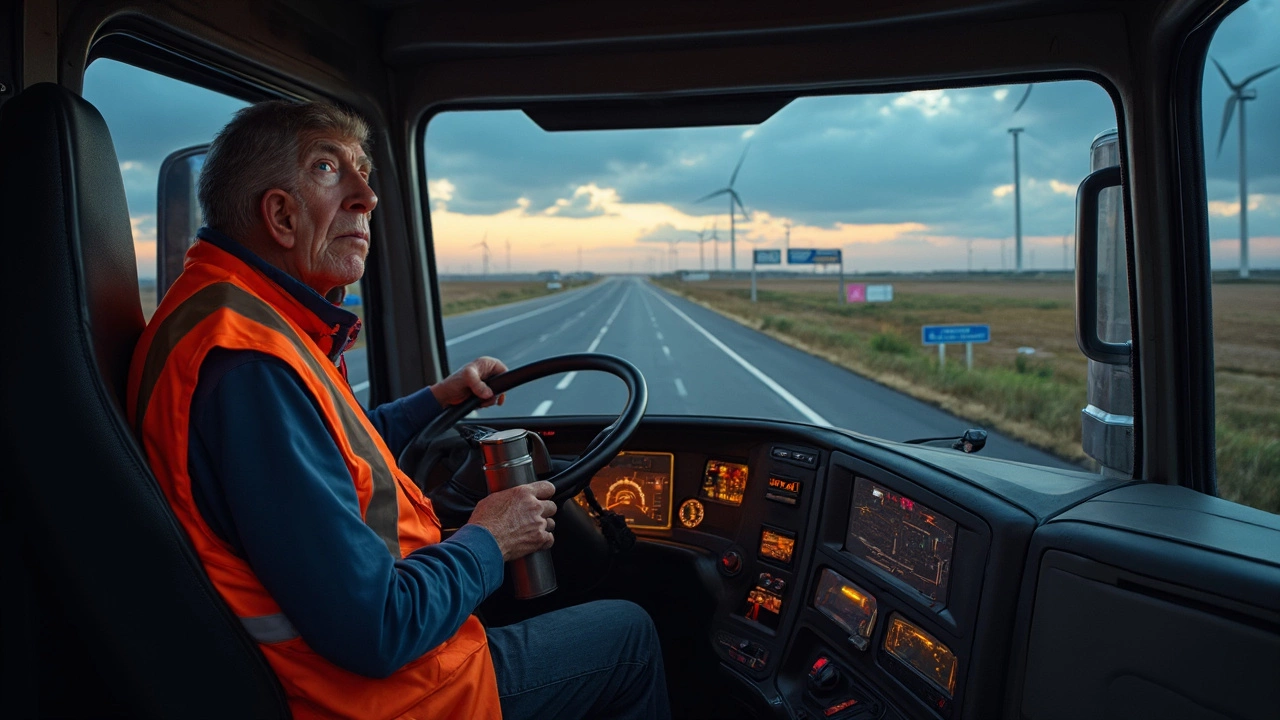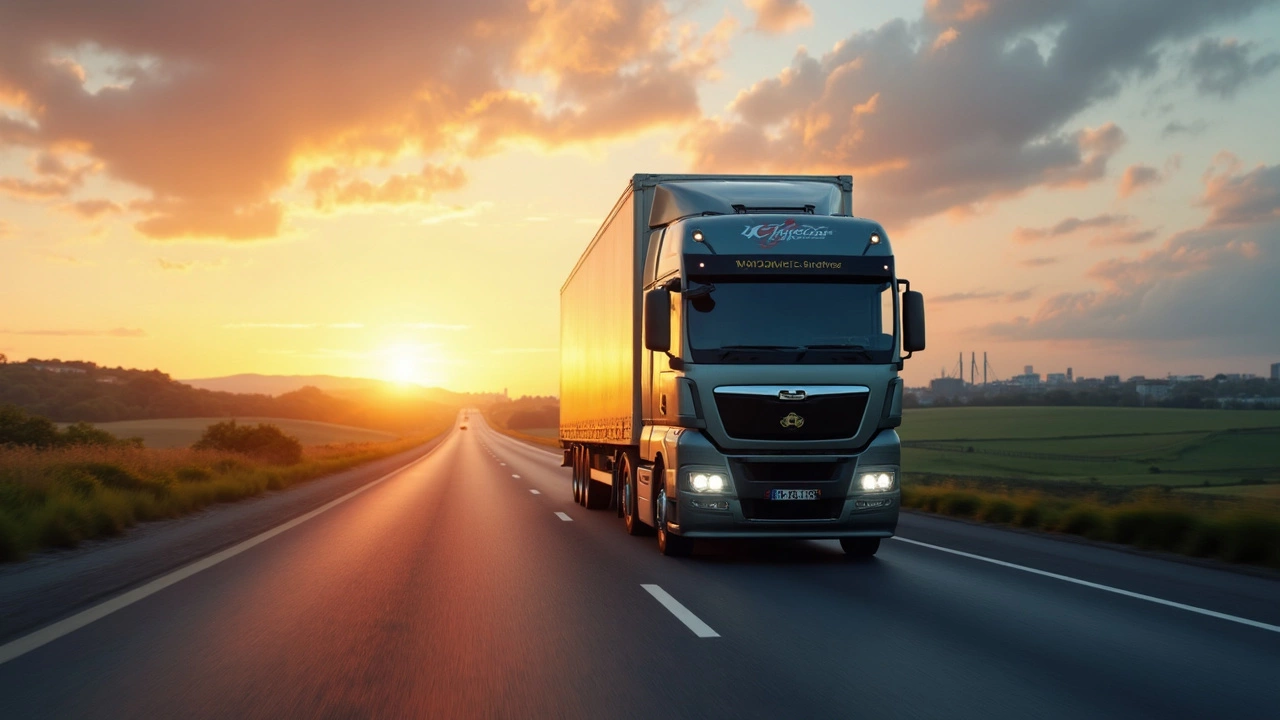Heard people talking about 'trunking' in the HGV world and wondered what the fuss is about? Well, if you picture a straight run between two points on the map, you’ve pretty much nailed it. Trunking is all about driving an HGV—usually a big, artic lorry—between main warehouses or depots, with very few stops, and rarely any handballing. No hassle with unloading parcels at every high street or squeezing into tight cul-de-sacs. Most of your job happens on big A-roads, motorways, and secure yards.
Trunking jobs can sound repetitive, but that’s exactly what some drivers love about them. You’re not getting stuck in traffic in the town centre or messing around with tricky deliveries at random addresses. It’s all about getting from A to B, often overnight or at quieter hours, so you can fly along without the school-run chaos or endless red lights. For new drivers, or anyone sick of endless stops, trunking is worth a closer look.
- What is Trunking in HGV Driving?
- Why Trunking Makes a Big Difference for Drivers
- Day-to-Day Realities: What to Expect
- Getting Started: Tips for Training and Success
What is Trunking in HGV Driving?
Trunking is basically the backbone of modern UK logistics. It means driving a heavy goods vehicle (or HGV) between big depots, warehouses, or hubs—often on the motorway without messing around with local streets or multiple drop-offs. This isn’t the kind of job that has you running parcels up garden paths or fighting for parking outside tiny shops. You mostly stick to main roads, do long stretches behind the wheel, and hand over a full load when you get from A to B.
Big retailers, national couriers, and food distributors love trunking because it keeps things smooth and predictable. Think about those huge branded trucks you see rolling down the M1 late at night—that’s usually a trunking journey. Most trunking work happens at off-peak times, like evenings or through the night, to dodge the traffic jams and cut delivery times to a minimum.
| Trunking Job Facts | Typical Details |
|---|---|
| Average shift length | 8-12 hours |
| Number of stops | Usually just two (start and finish) |
| Main operating hours | Evenings, nights, early mornings |
| Pallets per trailer | 20-30 pallets usually |
| Popular companies | Tesco, Royal Mail, DHL, Eddie Stobart |
Tons of new drivers start out doing multi-drop jobs and wonder how people seem to get the easier gig. The truth? Trunking is that easier gig, at least in terms of physical work. There’s less lifting and shifting—most depots have forklift drivers or pallet trucks to swap out your load. Your main job is to get the lorry there on time, stay alert on the motorway, and keep the paperwork tidy at each end. If you’re getting your HGV training, expect the word ‘trunking’ to come up a lot when describing job adverts or common vacancies.
Why Trunking Makes a Big Difference for Drivers
If you ask most drivers why they stick with trunking, it usually comes down to predictability and less stress on the body. You’re clocking up regular mileage on main roads, steering clear of stressful city centres or tight backstreets. That means way less time spent reversing into awkward spaces or carrying heavy goods in and out of small shops. For folks who like routine, trunking is genuinely appealing.
One of the huge perks is the regular working hours. Most trunking shifts are set—days, nights, or sometimes weekends—and there’s not much overtime wrangling if you’re working for a big logistics firm. It suits drivers who want their life outside work to actually be predictable for a change. Here’s how trunking stacks up compared to other HGV jobs:
| Job Type | Average Daily Stops | Average Hours per Shift | Physical Demand |
|---|---|---|---|
| Trunking | 2-4 | 8-12 | Low |
| Multi-Drop | 15-40 | 10-14 | High |
| Regional Delivery | 5-10 | 9-13 | Medium |
There’s also the fact that trunking jobs often use the newest, most comfortable lorries. Big companies running these contracts don’t mind spending on decent equipment—they want the miles racked up without vehicles breaking down. So, you’re more likely to get a newer cab with working air-con and a decent bunk for your breaks, which makes the long hours way more pleasant.
Many drivers notice how much easier it is to balance work and home life, too. Since you’re not stuck waiting around at dozens of delivery stops, there’s less hanging about. One driver summed it up perfectly:
“You always know where you’re going and roughly when you’ll be finished. With trunking, you’re not worrying about being late to pick up your kids just because someone on a side street wasn’t in.” – Lee Parsons, HGV trainer, interviewed by Road Transport Media
- Less manual handling = Fewer aches and injuries over time.
- More time on big roads = Lower accident risk.
- Fixed routes = Easier route planning with digital tachographs.
- Nicer vehicles = Less daily stress behind the wheel.
Trunking isn’t for everyone, but if the idea of regular hours, better trucks, and fewer hassles sounds good, it’s probably worth a try.

Day-to-Day Realities: What to Expect
If you land a trunking job, your daily routine becomes pretty predictable—which is a big plus for a lot of drivers. Your shift usually starts at a large depot or distribution centre. Companies give you a fixed route, often the same every day or night, so you can memorise the roads and timings quickly.
On any given day, you’ll check over your vehicle, sort your paperwork, then set off for the other depot. You barely see any customers or shop staff because you’re just moving full loads between hubs. Very rarely do you need to unload it all yourself—most places have yard teams for that. It’s almost always about travelling longer distances on motorways and dual carriageways, not weaving through city streets.
A big chunk of trunking jobs happen overnight or during off-peak hours. This way, you miss the worst of UK traffic and avoid losing time in queues. Some folks love the peace and clear roads, while others find the hours a bit anti-social. But hey, let’s be real: less traffic means an easier drive and better fuel economy.
Shifts can be long. Many trunking runs start in the evening and finish early the next morning. That means fewer interruptions, but also fewer places open for food and toilets along the route—so you need to plan ahead. Most drivers bring their own food and drinks and check where service stations are along their run.
If you’re a stickler for routine and want to keep to regular sleep and meal times, trunking’s regular pattern could really work for you. Here’s what a typical trunking shift might look like:
- Arrive at depot, check vehicle and load
- Collect paperwork and do your walkaround check
- Set off on your fixed route (often 100–300 miles per leg)
- Drop off the trailer at the other depot
- Possibly pick up a new load or swap trailers
- Head back or finish your shift, logging mileage and time
Let’s break it down with some real numbers. According to a 2024 survey by the Road Haulage Association, around 60% of HGV trunking jobs offer fixed routes, and 70% are operated overnight. The average HGV trunking distance in the UK sits between 150 and 250 miles per shift. That’s usually two to six hours of driving, plus breaks and waiting for loading and unloading teams.
| Key Fact | Typical Numbers/Info |
|---|---|
| Hours per shift | 8–12 |
| Total distance per shift | 150–250 miles |
| Breaks required | At least 45 mins after every 4.5 hours |
| Overnight shifts | 70% of trunking jobs |
| Unloading responsibility | Rarely (mostly dedicated staff handle it) |
This type of HGV work isn’t for everyone, but for those who prefer just driving and racking up the miles, trunking is tough to beat.
Getting Started: Tips for Training and Success
If trunking seems like your style, there’s some groundwork to lay before you jump behind the wheel. Most drivers start by getting a Cat C+E licence, which is what you need to drive articulated lorries for trunking jobs. Your HGV training will usually include both the theory and practical tests, plus plenty of real-world practice with reversing and parking massive trailers, since trunking often means bigger vehicles.
Here’s what you should focus on when prepping for your trunking career:
- HGV licence (Cat C+E): Make sure your licence fits the vehicles you want to drive. Most trunk routes use artics, so Cat C+E is your ticket.
- Digital Tachograph Card: You’ll seriously need this to legally record your driving and breaks. No card, no job—simple as that.
- Driver CPC (Certificate of Professional Competence): You need the full 35 hours of periodic training. Keep your CPC up to date, or you can’t drive professionally.
- Basic Route Planning: Practice reading maps or using route-planning tech. Trunking is all about efficient, long journeys, so knowing your way around motorways is key.
- Vehicle Checks: Most employers expect daily walkarounds before you set off. Learn how to spot things like flat tyres or broken lights fast.
Making it in trunking isn’t just about your licence. It’s about being reliable, time-aware, and cool on long, sometimes overnight runs. Top employers are usually looking for folks who never miss checks, rarely get stressed by traffic, and know how to handle a bit of boredom without cutting corners. Some even toss in bonuses for clean runs with zero incidents.
Here’s a quick glance at what you’ll need before applying for trunking jobs:
| Requirement | Description |
|---|---|
| Cat C+E Licence | Needed for most HGV trunking jobs (articulated lorries) |
| Driver CPC | 35 hours training, legal requirement |
| Digital Tacho Card | Records hours driven, required by law |
| Clean Driving Record | Fewer infractions = better job options |
| Experience (sometimes optional) | Some companies want a few months under your belt, but starter jobs do pop up |
Finally, don’t be shy about asking your trainer for feedback, or chasing a bit of extra practice if reversing artics is giving you grief. The more confidence you build early on, the smoother those trunk runs get. Getting in touch with seasoned trunking drivers can help too—they’ll clue you in on everything from the best service stations to avoid boring food to ways of keeping alert on overnight hauls.

